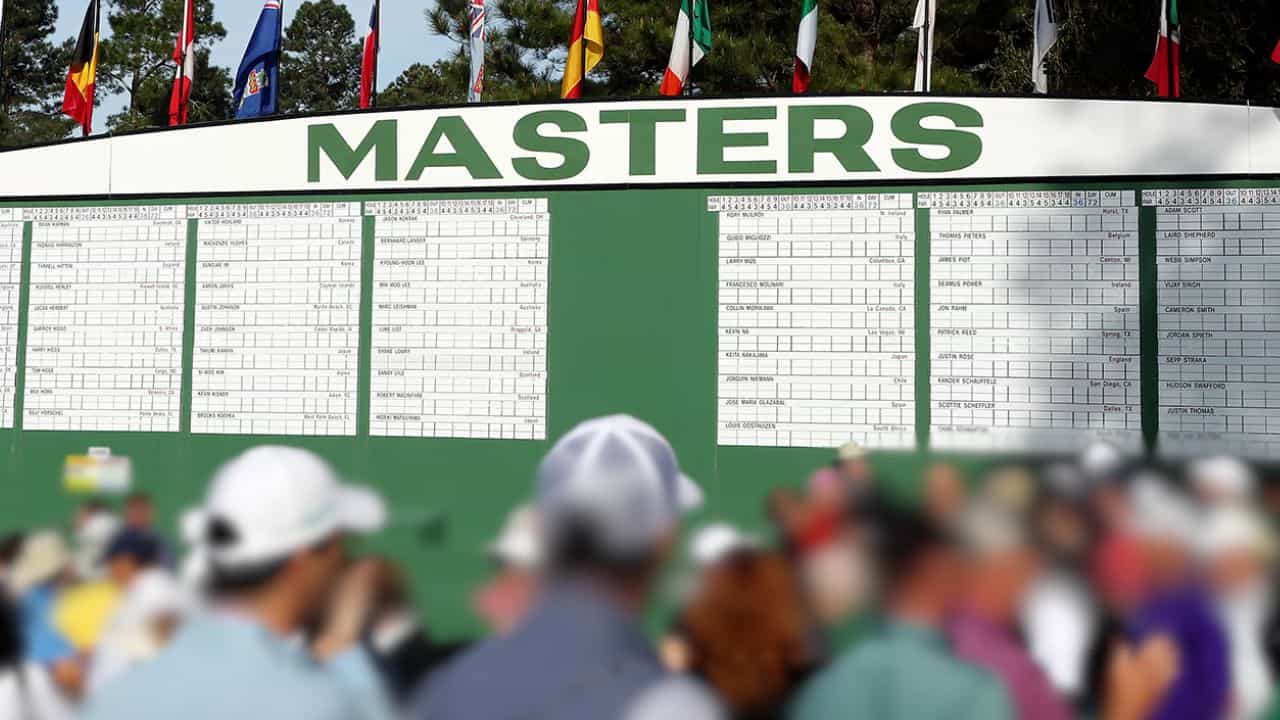What is the cut line at the masters?

Golf is a sport rich in tradition, and this is especially true when it comes to the esteemed Masters Tournament. One of the key aspects that sets the Masters apart from other tournaments is its unique “cut line.”
But what does this term mean, and how does it function within the framework of the Masters? Here, we will delve deep into understanding the cut line rule at the Masters and cover all the essential aspects you need to know about it.
I. What is the cut line at the masters?
The “cut line” in professional golf, including the Masters Tournament, is the minimum score a player needs to continue in the competition. At the Masters, after the first two rounds, only the top 50 players and ties proceed to the final rounds.
The cut line is based on scores from these initial rounds. This unique aspect of the Masters determines who remains in the game and also adds an element of strategy and excitement to the tournament.
This time the cut line for the Masters 2023 was settled at 3 over par (147) after some late shifts due to poor weather. This allowed Tiger Woods and others on the brink to continue in the tournament. A total of 54 players made the cut.
II. The Masters Golf Tournament Vs PGA Tournament
The Masters and the PGA Tournament are two prestigious events that significantly contribute to professional golf. Here is a comparative table highlighting various aspects of these two tournaments:
| Feature | The Masters Golf Tournament | PGA Tournament |
| Established | March 22, 1934 | April 10, 1916 |
| Location | Always held at Augusta National Golf Club, Georgia, USA | Rotates among a select group of courses in the United States |
| Cut Line Rule | Top 50 players and ties after the first two rounds. | Top 70 players and ties after the first two rounds. |
| Traditions | Green Jacket awarded to the champion | Wanamaker Trophy awarded to the winner |
| Field Size | Smallest field of the four major championships, typically less than 100 players | Field of 156 players |
III. The Cut Line in Golf Tournaments
In the majority of golf tournaments, a “cut line” is implemented after the first two rounds, equivalent to 36 holes. This cut line acts as a performance threshold, reducing the number of players who proceed to the next stage of the tournament.
Only the competitors who perform beyond this established level, as determined by the cut line score, are permitted to advance to the third and fourth rounds. This process ensures that the final rounds of the tournament are highly competitive and feature only the top-performing golfers from the initial stages.
IV. How the 36-hole cut rule is determined at Augusta National
Let’s take a closer look at the 36-hole cut rule at Augusta National for The Masters:
- History: The Masters, hosted at the prestigious Augusta National, introduced a distinct 36-hole cut rule in 1957. This rule allowed only the top 40 players and those tied for 40th place or better to advance to the final two rounds of play.
- Abolition of the 10-shot Rule: A significant shift occurred in 2020 when tournament officials decided to overhaul this rule. They abandoned the “10-shot rule,” which had previously allowed any player within 10 strokes of the lead to remain in the competition.
- The Present Rule: As per the current regulation, merely the top 50 players, along with those tied for the 50th place after 36 holes are permitted to participate over the weekend. This strategic move halves the field after two rounds, ensuring a highly competitive environment for the tournament.
V. Record and Stats
Here’s a comprehensive table showcasing those with the most cuts made and the longest streaks of consecutive cuts in the tournament’s storied history.
| Most Cuts Made | Most Consecutive Cuts Made |
| 37, Jack Nicklaus | 23, Gary Player (1959-1982) |
| 30, Gary Player | 23, Fred Couples (1983-2007) |
| 30, Fred Couples | 21, Tom Watson (1975-1995) |
| 27, Raymond Floyd | 22, Tiger Woods (1997-2022) |
| 27, Bernhard Langer | 19, Gene Littler (1961-1980) |
| 26, Phil Mickelson | 19, Bernhard Langer (1984-2002) |
| 25, Arnold Palmer | 18, Billy Casper (1960-1977) |
| 25, Ben Crenshaw | 17, Phil Mickelson (1998) |
| 24, Tom Watson | 15, Bruce Devlin (1964-1981) |
| 23, Billy Casper | 15, Jack Nicklaus (1968-1982) |
| 13, Ben Crenshaw (1980-1992) | |
| 13, Nick Faldo (1979-1996) | |
| 13, Raymond Floyd (1973-1985) | |
| 13, Corey Pavin (1985-1998) | |
| 13, Justin Rose (2003-2018) | |
| 13, Adam Scott (2010-2022) |
VI. Strategies for Players Near the Cut Line
The cut line significantly influences players’ strategies. Those near the cut line often take calculated risks to ensure they make it to the final rounds.
These strategies can include playing more aggressively to secure lower scores or playing conservatively to avoid mistakes that could push them over the cut line.
1. Here are three strategies followed by Tiger Woods:
Below are a few strategies of Tiger Woods that can be implemented in a game for a better score:
- Establishing a Game Focus and Scoring Objective:
- Goals: Consider setting a scoring objective for each round, factoring in the playing conditions. Keeping an end goal in mind can guide the game strategy.
- Cautiousness: If you’re targeting a lower score, you may need to adopt a more cautious approach.
- Create a Consistent Pre-shot Ritual:
- Routine: Tiger Woods has a steady pre-shot routine that he has stuck to over time: three practice swings, two waggles, and approximately 14-15 seconds from stepping into the shot to striking the ball.
- Consistency: A regular pre-shot ritual can bring uniformity to your golf game, aiding you in feeling more at ease with the ball.
- Avoid Directing Shots at the Pin:
- Approach: Tiger Woods is known for his strategic game approach, often opting for clubs with a higher percentage off the tee and targeting areas of the green that have a larger margin for error.
- Strategy: Always aim for the part of the green where a 10-yard deviation in any direction is least penalizing.
- Determination: In situations where there are no safe zones, fully commit to your shot and unleash it.
2. Consequences of Missing the Cut:
- Elimination: Missing the cut has serious implications. Players who don’t make the cut are disqualified from the tournament, missing out on potential prize money and ranking points.
- Reputation: It also affects their standing in the golfing community and can influence their invitations to future tournaments.
3. Impact of the Cut Line on Golf Odds:
- Bets: The cut line also plays a significant role in golf betting. It affects head-to-head matchups and outright bets, as the odds change based on the number of players who make the cut and their respective scores.
Conclusion
Understanding the cut line at the Masters is essential for both players and spectators. For players, it’s about strategizing and performing to remain in the tournament. For spectators, especially those placing bets, it adds an element of suspense and intrigue to the tournament.
The cut line is indeed a unique and crucial aspect of the Masters, adding to the allure and excitement of this prestigious event.
FAQs
1. What is the average cut score?
The average cut at the Masters is approximately 148.44 or +4, the lowest cut at even par in 2020 and the highest was at +10 in 1982.
The highest number of players making the cut was 60 in 2020, and the lowest was 52 two years later.
2. Who has made the most cuts?
The record for the most cuts at the Masters belongs to Jack Nicklaus, with an impressive 37 cuts.
3. Who has made the most consecutive cuts?
The record for the most consecutive cuts at the Masters is shared by Fred Couples (1983-2007) and Gary Player (1959-1982), each achieving a streak of 23 consecutive cuts.
4. Did Tiger Woods make the cut at the 2023 Masters?
Yes, Tiger Woods did make the cut at the 2023 Masters. This marked his 23rd consecutive cut at the Masters, tying the all-time record.








